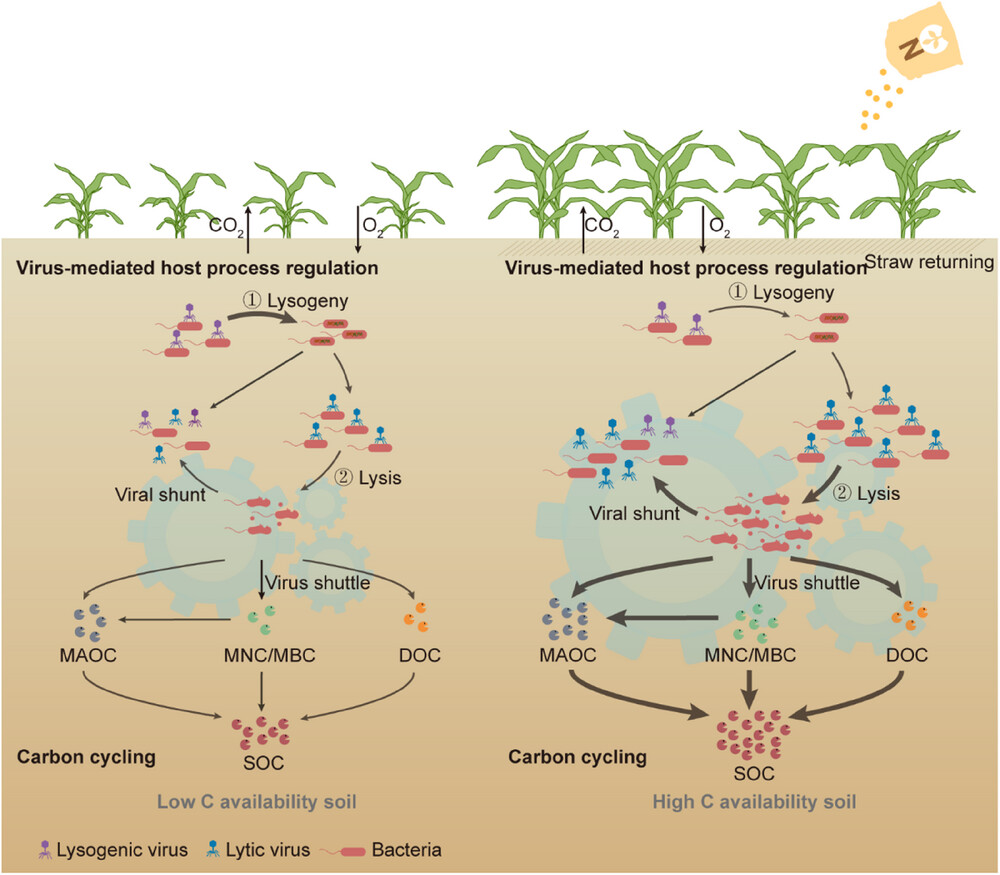
Microbial adaptations to resource availability are crucial to predict the responses of ecosystems to carbon (C) changes, yet viral roles in C cycling under varying levels of C remain elusive. Through metagenomic analysis of soils with contrasting C availability, a total of 24,789 viral contigs predominantly represent Microviridae and Siphoviridae. The soils with low C availability (straw removal) harbored 21% lysogenic viruses and enriched auxiliary metabolic genes (AMGs) related to C degradation (p < 0.05). Conversely, the soils with high C availability (straw returning) show 93% lytic viruses, stronger virus-bacteria symbiosis, and numerous host functional genes related to C cycling and viral AMGs linked to C fixation (p < 0.05). Furthermore, these findings show that the addition of viruses boosted microbial metabolic efficiency and recalcitrant C accumulation (p < 0.05), with lytic activity accelerating organic C turnover via nutrient release and necromass formation. Overall, this study demonstrates viruses as key regulators of sustainable sequestration of C through host-driven metabolic optimization.
This study published inAdvanced Science in May.

Viral regulation of soil carbon (C) cycling under long-term straw returning and N fertilization.
Attachment Download: